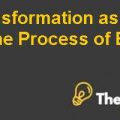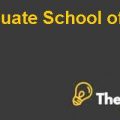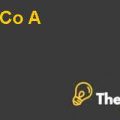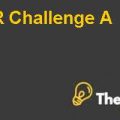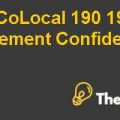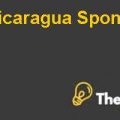Weaknesses
Dependence upon Banks
Deposita is dependent upon banks for cash-disbursing mechanism. They had the regulatory authority to circulate money on behalf of Deposita; therefore, Deposita was totally dependent upon banks.
Over pricing
The services offered by ABM are high priced because of the fact that Deposita has to pay money to the banks for regulatory authority.
Opportunities
Market Expansion
As the case states, Deposita has the chance to enter new markets after its successful implementation in South Africa.
Strategic Alliance
Deposita can develop or establish strategic alliance with a local bank to have control over cash disbursing mechanism. This will negate the threat for the company and will relax the terms and conditions for Deposita.
Threat
Competition
The competitors of Deposita and its services are the banks that are operating in the similar industry.
Government Regulations
The government rules and regulations were not in favor of Deposita because government was keen and focused on providing rules and regulations for banks rather than Deposita.
PEST Analysis
Political Factors
The political condition of the country is unstable with the increasing crime rate in the country. The biggest challenge ahead for the government is to make sure that the supply of machinery required to install ATMs for banks is in great condition. As for now, all the major banks in South Africa are hampered by the short fall of technical sector in the country. Further, the level of income for people in both urban and rural area is very low. In rural areas the income is less than the overall region along with this the instability that is present there.
Economic Factors
The country is highly dependent on gold mine reserves as the major income generating opportunity. The inflation growth rate of the country is approximately 5%. The average family income of the country is ($32) per month, which indicates the low level standard of living. There are significant economic disparities between rural and urban population. 65% rural and 35% urban population is defined as poor with earnings of $1 per day. The amount of saving is not more than 18% of the total income per month or $5.76. With such low levels of income, the ratio of corruption and crime is very high in most parts of the country especially the rural regions.
Social Factors
The population of South Africa consists of Christians who accounts for more than 79% population, whereas 11% population is Zion Christians and the rest of the 10% accounts for diverse ethnic and religious groups. Three tribal groups represent almost 60% of the population. Historical tension between religious groups frequently outbursts in to violence and the literacy rate is high as more than half of the population has the ability to read and write English.
Technological Factors
The limited resources of reliable infrastructure are a big hurdle in the information technology industry of South Africa, specifically the electric power, roads and water infrastructure. However, the banking industry is on the verge of growth with more foreign banks coming in with investment in this part of the world.
Step 3: Develop and Evaluate Strategic Options
TOWS Matrix
The internal forces that have been identified based on the strengths and weaknesses; however, external forces consist of opportunity and threats. Internal factors are related to firms operations and external factors are related to the industry in which firms operate.
TOWS are the most common matrix that is used by companies. It is easy to understand and perform. In T. O. W. S matrix, four strategies are developed which are Strength – Opportunity (SO), Strength – Threats (ST), Weaknesses – Opportunity (WO), Weaknesses – Threats (WT).
SO Strategy
Under this strategy company’s strength with opportunity are combined. In SO strategy, two alternatives are created. Following are the alternatives.
- Penetrate into the market (S5, O1)
- Find New Markets by Using technology (S2, O2)
Alternative 1 consists of strength 5 and opportunity 1. Alternative 2 consists of strength 2 and opportunity 2. Here we can follow 2 strategies that are market penetration strategy and market development strategy.
ST Strategy
Under this strategy, company’s strength is combined with threats. In ST strategy, two alternatives are created. Following are the alternatives.
- Use state of the art technology to sustain competitive advantage (S2, T1)
- Do lobbying with government official (S3, T2)
Alternative 1 consists of strength 2 and threats 1. Alternative 2 consists of strength 3 and threats 2. Here we can follow one strategy that is the differentiation strategy. Company has state of the art technology. They can create major difference company and its competitor.......................................
This is just a sample partial case solution. Please place the order on the website to order your own originally done case solution.



